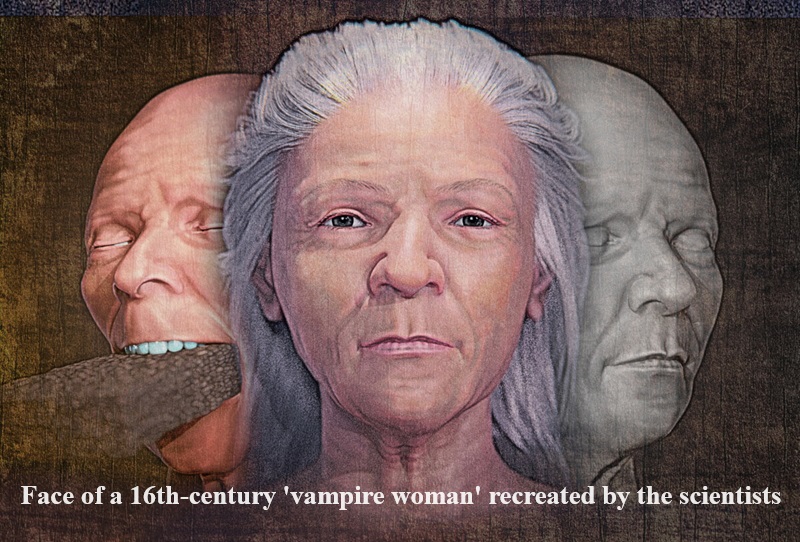
Scientists have brought to life the visage of a 16th-century woman, entangled in local lore as a vampire by Italian villagers. The eerie tale unfolds with the discovery of a brick wedged within her mouth, purportedly inserted to thwart her alleged predilection for consuming the deceased.
The narrative of the vampire woman emerged from the unearthing of a mass grave on the Venetian island of Lazzaretto Nuovo, utilized as a quarantine site during the bubonic plague of the late 1500s and early 1600s. In 2006, archaeological endeavors revealed bodies interred centuries prior.
Forensic researcher Cicero Moraes, in conversation with the South West News Service, shed light on this curious revelation, stating, “When they supposedly identified a vampire, one of those responsible for the plague according to popular myth at the time, they introduced the stone [brick] as a protective element, preventing it from feeding and also from infecting other people.”
The mystery of the brick was unravelled through the utilization of reconstruction technology by Moraes. Delving into the possibility of the brick being implanted within the woman’s mouth while she yet drew breath, Moraes sought to accomplish this without compromising the integrity of her teeth and soft tissue.
Theoretical conjecture entertained the notion that a graverobber might have ensconced the brick within the corpse’s mouth post-mortem, ostensibly to “exorcise” her, thereby averting the risk of her posthumous biting and subsequent infection of others.
Previous investigations ascertained that the skull belonged to a lower-class European woman, whose demise occurred at the age of 61. The latest study entailed the scientists reconstructing the skull and fashioning a replica brick from styrofoam to discern whether it was implanted prior to or subsequent to her passing.

Post Your Comments